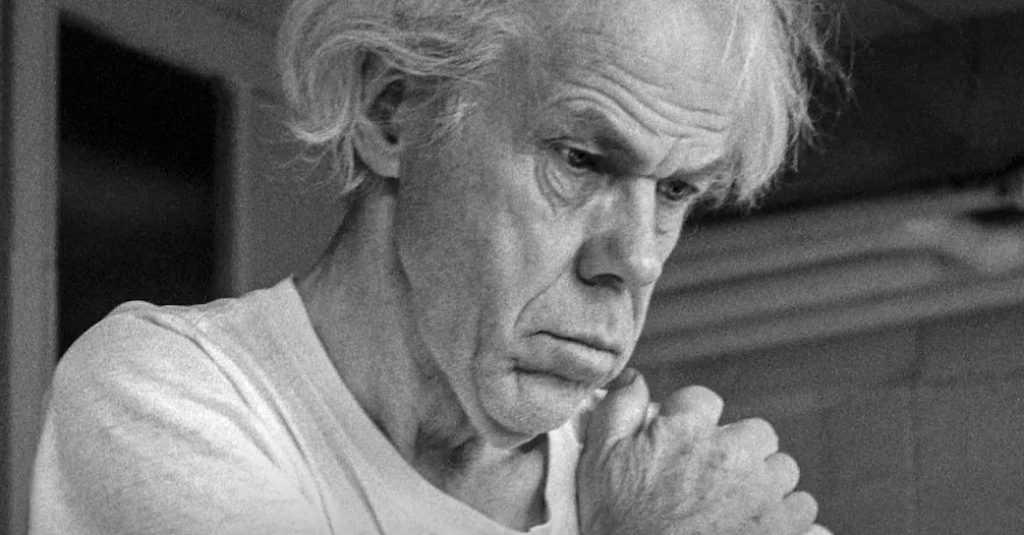Minor White, a pivotal figure in 20th-century photography, made an indelible impact on the field as an artist, teacher, and editor. His distinct approach emphasized the spiritual and emotional aspects of photographic art, thereby shifting the perspectives of audiences and artists alike.
Personal and Philosophical Influences on Minor White’s Photography
Minor White, the renowned photographer, was not just an artist but a soulful individual whose life experiences, personal struggles, and philosophical beliefs significantly influenced his approach to photography. Born in 1908 in Minneapolis, Minnesota, his fascination with both poetry and photography began early on, eventually leading him to explore the deeper connections between these two mediums.
Early Life and Dual Mediums
During his formative years, Minor White discovered a passion for both poetry and photography. These two seemingly distinct forms of art played pivotal roles in his life, shaping the way he perceived the world and allowing him to capture its essence in his own remarkable way. Through photography and poetry, he found creative outlets to express his thoughts, emotions, and profound experiences.
Influences and Philosophical Underpinnings
White’s photography was deeply influenced by a rich tapestry of philosophies and spiritual practices that he embraced throughout his life. These influences became the foundation upon which he built his artistic vision:
- Zen Buddhism: The Zen philosophy of being present and finding beauty in simplicity profoundly impacted White’s photographic approach. He sought to capture the fleeting moments of life, the ephemeral beauty hidden in everyday scenes, and the profound stillness amidst chaos;
- Gnosticism: Gnosticism’s emphasis on inner knowledge and spiritual awakening resonated with White’s belief in the transformative power of photography. Through his images, he aimed to evoke a sense of self-awareness and an understanding of the deeper layers of existence;
- Jungian Psychology: Carl Jung’s theories about the collective unconscious and archetypes influenced White’s exploration of symbolism in his photography. He often used symbolism to convey complex emotions and ideas, inviting viewers to delve into their own subconscious minds;
- Teachings of G. I. Gurdjieff: White’s encounter with Gurdjieff’s teachings, which focused on self-awareness and self-development, added another dimension to his work. His photographs became a reflection of his inner journey and a way to understand the interconnectedness of all things.
Photography as Personal Expression and Spiritual Revelation
Through the convergence of his personal experiences and philosophical influences, Minor White believed that photography could transcend its conventional role as a mere tool for recording the world. Instead, he saw it as a means of personal expression and spiritual revelation. His photographs went beyond the surface, inviting viewers to explore their emotions and contemplate the deeper meanings behind the captured moments.
Engaging with the Viewer
One of the unique aspects of White’s photography was his ability to engage the viewer on multiple levels. Let’s take a closer look at how he achieved this:
| Engagement Technique | Description |
|---|---|
| Symbolism and Metaphors | White incorporated symbols and metaphors in his images, creating a multi-layered experience that encouraged viewers to interpret. |
| Use of Light and Shadows | Playing with light and shadows, he instilled a sense of mystery and emotion, drawing viewers into the scene with an air of intrigue. |
| Capturing Emotions | His photos evoked a wide range of emotions, allowing viewers to connect with the feelings and experiences depicted in the frame. |
| Spiritual Contemplation | White’s work often encouraged contemplation, inviting viewers to ponder life’s mysteries and their place within the universe. |
White’s Contributions to the Advancement of Photography

Minor White’s work as a photographer and teacher in the mid-20th century played a critical role in the development of photography as an art form. His most significant contributions include the use of photographic sequences, the principle of “Equivalence,” and his work as an educator and advocate for photography.
1. Sequences
White revolutionized the field of photography with his pioneering use of sequences or series of photographs. Instead of treating photographs as standalone works, he viewed them as elements of a larger narrative or conceptual whole. This holistic perspective added new depth and layers of interpretation to photographic works.
| Key Concepts in Sequences | Description |
|---|---|
| Narrative Flow | Sequences of photos tell a story, with each image contributing to an overarching narrative. |
| Conceptual Whole | The total effect of a sequence is greater than the sum of its individual images. |
| Emotional Impact | Sequences allow for emotional buildup and resolution, increasing the viewer’s engagement. |
2. Equivalence
Equally groundbreaking was White’s concept of “Equivalence,” which significantly expanded the emotional and intellectual scope of photography. According to White, photographs were more than just representations of reality; they could serve as emotional or spiritual expressions of the photographer’s inner state.
Key Points:
- Transcendence of Reality: White argued that photographs could reflect thoughts and emotions beyond their subjects;
- Emotional Conduit: White believed that a photograph could serve as a channel for the photographer’s emotions;
- Personal Interpretation: Each viewer’s interpretation of a photograph could vary based on their own emotions and experiences.
3. Teaching and Advocacy
White made lasting contributions to the field of photography as an educator and advocate. He served as a teacher at the California School of Fine Arts (now the San Francisco Art Institute) and later at the Rochester Institute of Technology. As an educator, White imparted his philosophical and artistic approaches to photography to a new generation of photographers.
His advocacy for the art form was further demonstrated by his co-founding of the influential photography magazine, Aperture. This platform allowed White to promote photography as a serious and respected art form.
Key Contributions:
- Teaching: Imparted his philosophical and artistic approach to photography to students at renowned institutes;
- Aperture Magazine: Co-founded this influential platform to promote photography as an art form;
- Advocacy: Advocated for the recognition and appreciation of photography as a serious and respected art form.
Through these contributions, Minor White has had a profound influence on the world of photography, with his work continuing to inspire photographers and artists around the world.
Impact and Influence on Future Generations

Minor White, a renowned American photographer, left an indelible mark on the world of photography, particularly through his emphasis on the transcendental potential of this art form. His ideas, concepts, and integrative approach have not only shaped the practices of his contemporaries but continue to inspire and influence future generations of photographers.
Key Concepts of Minor White
| Concept | Definition |
|---|---|
| Transcendental Potential | White believed photography had the power to reveal the spiritual essence of the subject. |
| Sequences | Series of images where the collective meaning is greater than the sum of individual photos. |
| Equivalence | Photographs with diverse subjects that evoke similar emotions or visual experiences. |
| Integrative Approach | Blending various philosophical and spiritual teachings into his photographic principles. |
Influence on Contemporary Photography
Transcendental Potential of Photography
Minor White’s belief in the transcendental potential of photography challenged the notion of the medium being merely a tool for documentation. He saw the camera as a powerful instrument capable of capturing the unseen and metaphysical aspects of the world. This vision has inspired contemporary photographers to explore photography as a means of spiritual expression and to seek deeper connections with their subjects beyond the surface level.
Sequences
White’s pioneering concept of sequences involved presenting a series of images in a specific order to create a narrative or evoke a certain emotion. By carefully curating photographs in this manner, he demonstrated that the collective impact of images could transcend the singular significance of each photograph. This idea has since been adopted by numerous photographers who create photo essays and visual stories, effectively communicating complex themes and emotions through a sequence of interconnected images.
Examples of Contemporary Photographers using Sequences
| Photographer | Project | Description |
|---|---|---|
| Sarah Lane | “Journey to Enlightenment” | A series of photographs documenting a spiritual quest. |
| Javier Ramos | “Fading Memories” | A narrative sequence exploring themes of memory loss. |
| Maya Patel | “Embracing Diversity” | Photo essay showcasing the beauty of diverse cultures. |
Equivalence
White’s concept of equivalence encouraged photographers to explore the emotional and visual connections between seemingly unrelated subjects. He believed that diverse subjects could provoke similar feelings or experiences in the viewer, emphasizing the importance of mood and emotion over literal representation. This approach has since become a fundamental aspect of contemporary fine art photography, allowing artists to create evocative images that transcend traditional subject matter.
Examples of Contemporary Photographers using Equivalence
| Photographer | Project | Description |
|---|---|---|
| Alex Turner | “Nature’s Harmony” | Comparing patterns in nature and man-made structures. |
| Mia Johnson | “Silent Symphony” | Exploring the parallels between music and architecture. |
Integrative Approach
One of the most distinctive aspects of Minor White’s influence lies in his integrative approach to photography. He drew inspiration from various philosophical and spiritual teachings, incorporating elements of Zen Buddhism, Taoism, and mysticism into his work. This fusion of ideas allowed him to infuse his photographs with a profound sense of contemplation and symbolism. As a result, contemporary photographers have been encouraged to explore diverse philosophical concepts and spiritual practices, enriching their artistic expression and pushing the boundaries of visual storytelling.
For a better understanding, check this video, where several modern photographers discuss the influence of Minor White’s concepts on their work:
Conclusion
Minor White’s contributions to photography have elevated the medium from a mere tool of representation to an expressive and evocative art form. His innovative concepts, integrative philosophical approach, and relentless advocacy for the artistic potential of photography have left an indelible mark on the field, shaping its evolution and influencing countless artists along the way.
FAQ
Equivalence, in the context of Minor White’s work, refers to the idea that a photograph can serve as a symbolic representation of a photographer’s emotional or spiritual state, rather than just a literal depiction of a scene or object.
Sequences, as conceptualized by Minor White, are series or sets of photographs intended to be viewed together, with the order of images playing a crucial role in the overall interpretation. These sequences were meant to evoke a progression or journey of thought and emotion in the viewer.
Minor White’s concepts of sequences and equivalence have significantly impacted modern photography. His focus on the emotional and symbolic possibilities of photography has encouraged a more subjective and expressive approach among many contemporary photographers.
Yes, in addition to his work as a photographer, Minor White was also a notable educator. He taught at several institutions, most notably the California School of Fine Arts and the Rochester Institute of Technology, where he influenced numerous aspiring photographers.
